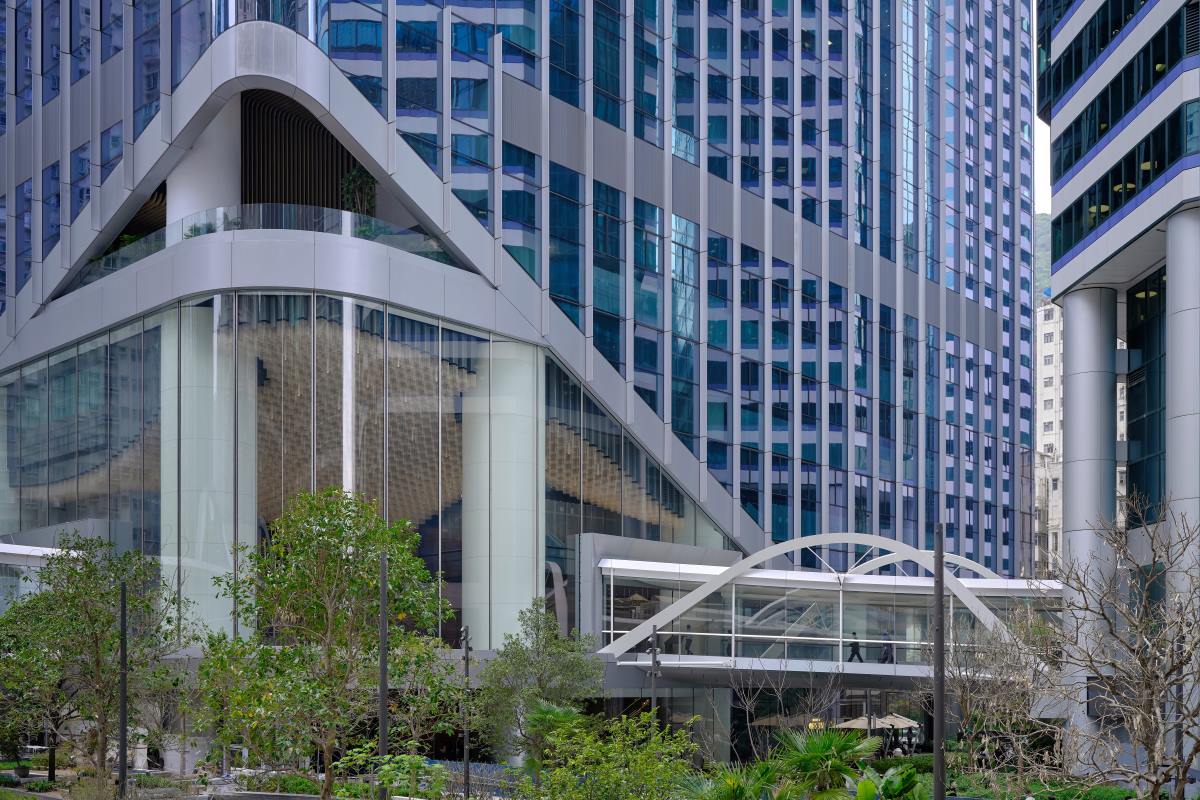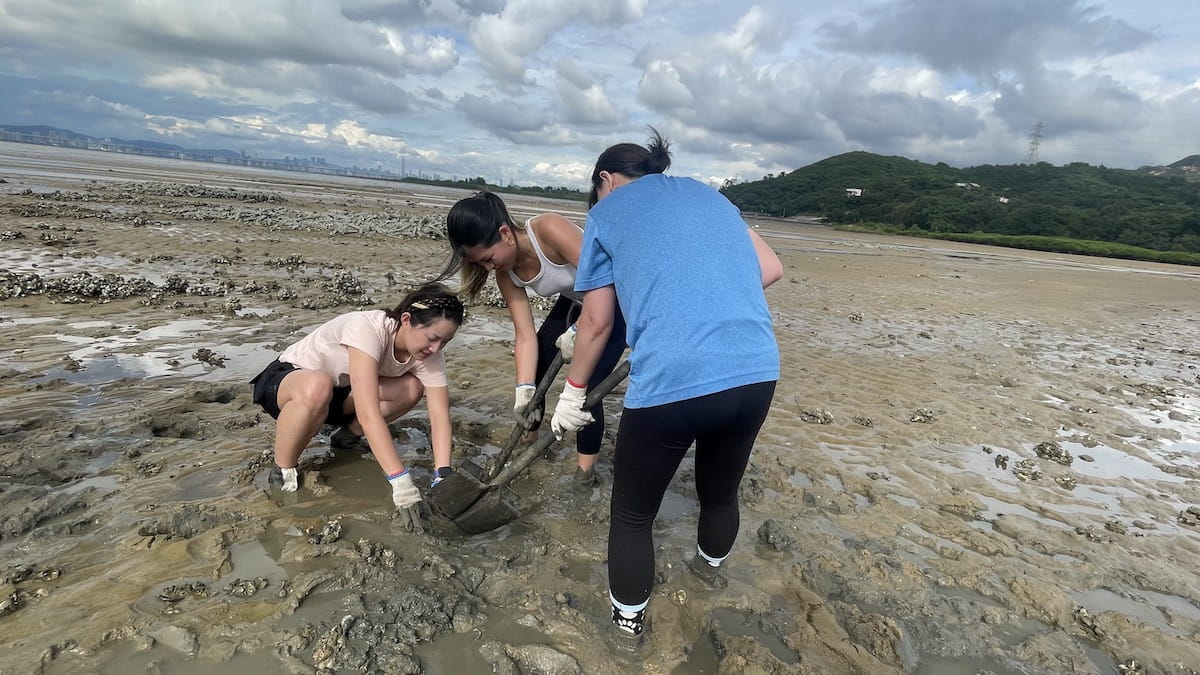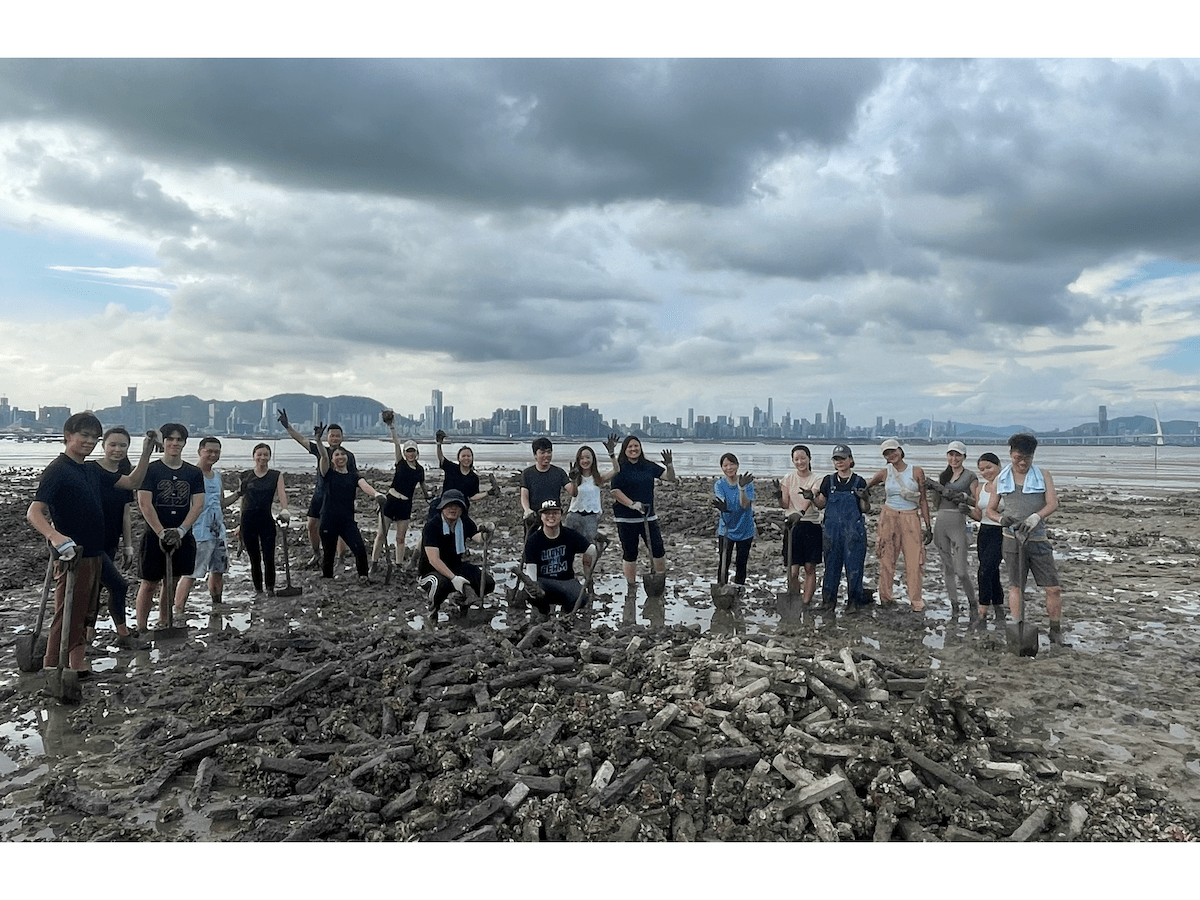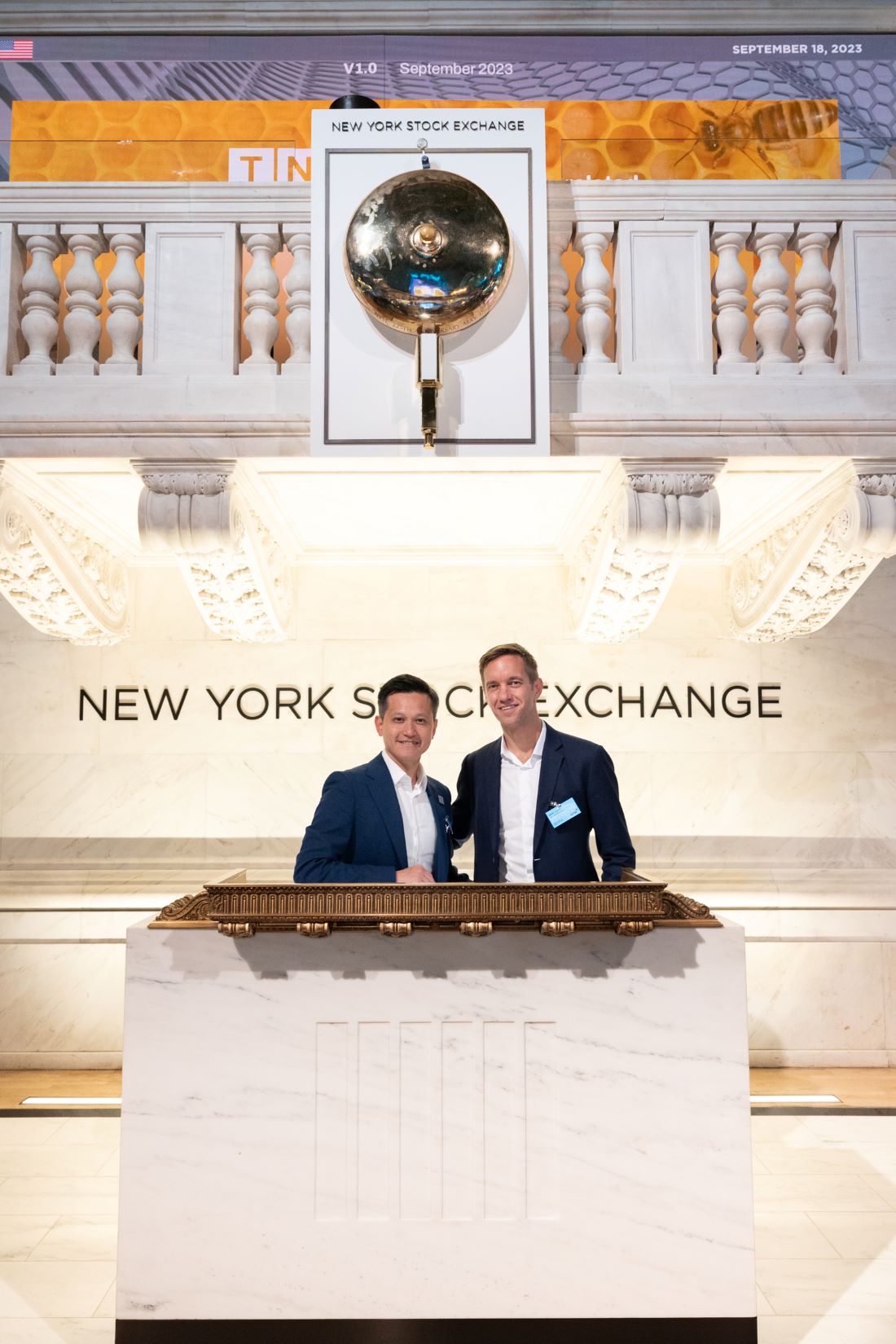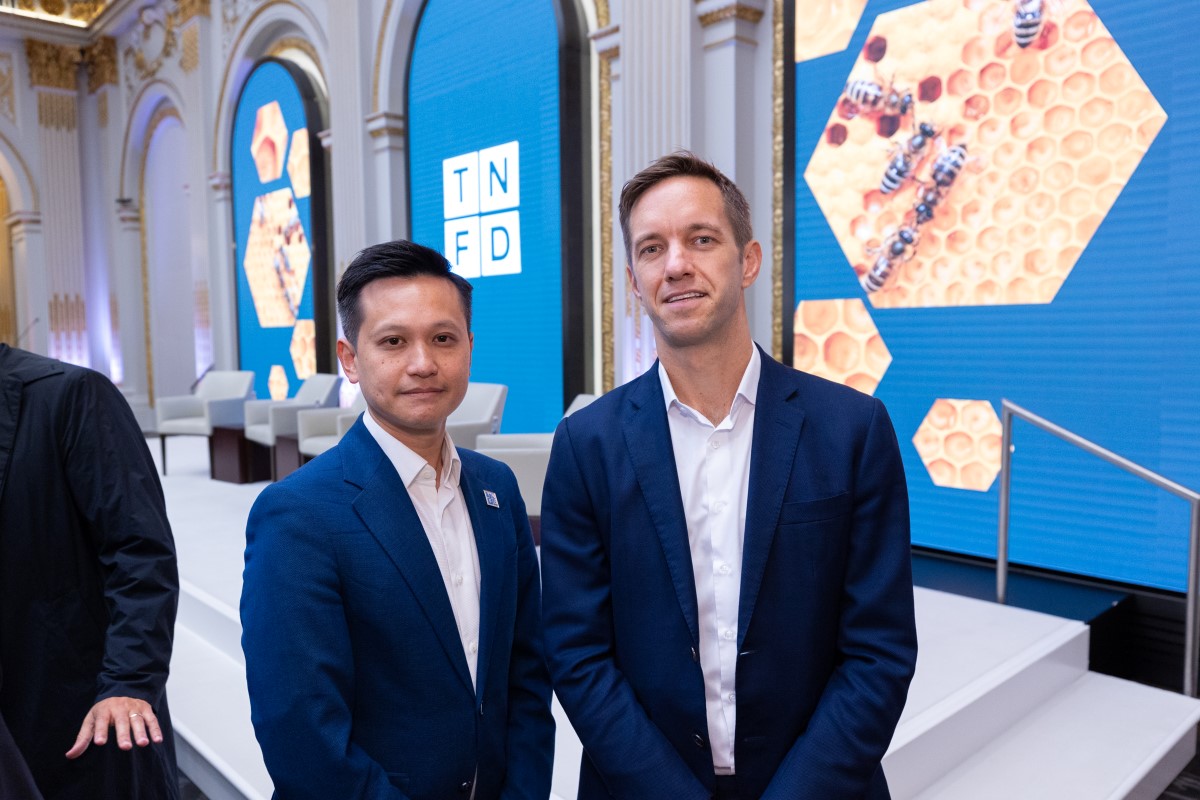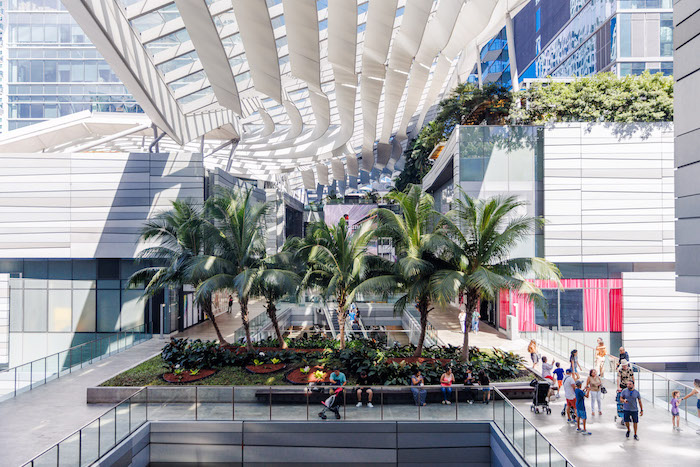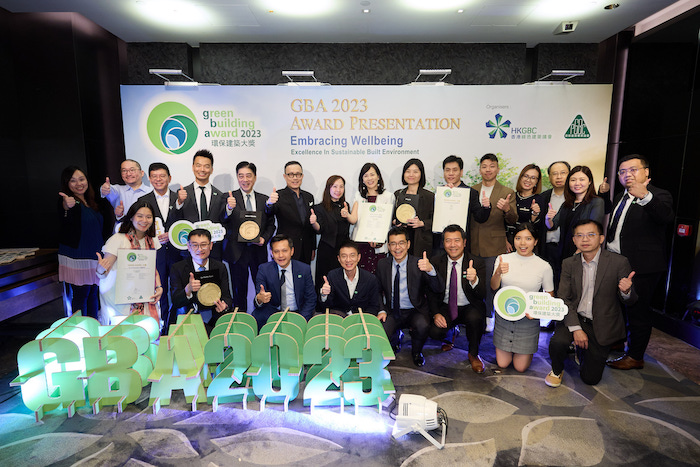Biodiversity Guidelines
In 2022, we began developing Swire Properties Biodiversity Guidelines for Hong Kong and the Chinese Mainland. These guidelines aim to define the importance of biodiversity and the Company’s approach to protecting it across our developments. The guidelines explain the importance of biodiversity, list various laws and regulations, and recommend actions Swire Properties can take to protect and enhance biodiversity across all stages of our current and future properties.
This year, we completed the development of biodiversity guidelines for Hong Kong. These include examples and checklists that will help project teams and management offices with ways to enhance biodiversity in our properties and new projects.
Reef Rebuilding Volunteering
Oyster reefs are crucial to coastal protection and marine ecosystems – they are also among the most endangered marine habitats on the planet. Two of our Hong Kong restaurants, FEAST and Salisterra, continued their long-standing partnership with the Nature Conservancy this year, donating oyster shells for reef restoration in Hong Kong and the Greater Bay Area.
Meanwhile, in mid-September, a team of volunteers from our Central Support Office and EAST Hong Kong took part in a reef rebuilding volunteering event at Ha Pak Nai in Yuen Long. The volunteers helped rebuild an abandoned oyster farm into a more natural reef, restoring the habitat to make it more conducive to foraging by species such as the endangered Horseshoe crab and helping to increase biodiversity on the mudflat.
NaN / 2
Nature-related Disclosures
Locate
- Following TNFD recommendations, we conducted an asset-level mapping to understand our portfolios’ interface with nature. We identified the ecoregions and biomes with which our assets interface, and used international and local databases such as Resolve, WWF-TNC, Aqueduct, Global Biodiversity Information Facility, The UN Environment Programme World Conservation Monitoring Centre ("UNEP-WCMC") and Hong Kong Biodiversity Information Hub ("HKBIH") to assess the current integrity and resilience of these areas and our assets’ proximity to critical habitats. We found that our portfolios interface diversely with nature, as they are spread across five distinct ecoregions and three terrestrial biomes that support multiple land and freshwater ecosystems.
- Swire Properties predominantly interacts with urban ecosystems. As such, we have developed a set of indicators to prioritise assets with high biodiversity integrity and importance within these ecosystems.
Criteria | Indicator |
|---|---|
Ecosystem integrity | Biodiversity Intactness Index (BII)
|
Biodiversity importance | Identified Biodiversity Issues (IBIs) 1.Proximity to protected areas
2.Proximity to critical habitats
3.Threatened species
4.Species richness
|
Water stress | Water Stress Indicator (WS)
|
- Priority sites were identified consisting of our new developments and existing developments in our Hong Kong, Chinese Mainland and U.S.A. portfolios.
- A list of high impact commodities (e.g. cement, sand, timber, steel, livestock and seafood) for our business activities was identified based on SBTN’s High Impact Commodities List and UNEP-WCMC sectorial materiality tool.
Evaluate
- Our business success depends on the provision of ecosystem services and nature loss can undermine our delivery of value to our stakeholders. Our operations also create impacts on nature, which can be either positive or negative. Negative impacts on nature erode the health and resilience of nature and its ability to provide ecosystem services. Conversely, contributing positively to the health and resilience of nature can secure and enhance the flow of ecosystem services on which the organisation and its value chain partners depend.
- In the “Evaluate” phase, we mapped out the business activities of the priority sites and identified the corresponding environmental assets and ecosystem services of which we depend on or have an impact on using the ENCORE tool. The level of materiality of the identified impacts and dependencies to the environmental assets and ecosystem services were then determined.
Business footprint mapping along value chain
New Development & Maintenance | Management of Properties | Tenants Operations | Demolition of Properties |
|---|---|---|---|
| Potential Impacts
| Potential Impacts
| Potential Impacts
|
Potential dependencies
| Potential dependencies
|
Evaluate – Dependencies
- The construction of our new developments and the operation of our existing portfolios are both dependent on ground water and surface water, consumed as part of the construction process, facility management and meeting the needs of our building occupants. On the other hand, the ecosystem’s capacity to regulate the extent of climate change will have a significant impact on our building designs and operations, and the health and safety of the occupants within our portfolio.
- Where our new developments are located in proximity to coastal areas and rivers, the ecosystem will also provide protection against storm/flooding resulting from increased extreme weather events.
Business Activities/ Dependencies | Property Management | Construction Activities | Hotel Management |
|---|---|---|---|
Direct Physical Input | |||
Water provisioning (ground and surface water) | |||
Fibres and other materials | |||
Mitigate Direct Impacts | |||
Bio-remediation | |||
Mediation of sensory impact | |||
Protection from Disruption | |||
Climate regulation | |||
Flood and storm protection | |||
Mass stabilisation and erosion control | |||
Pest control | |||
Enables Production Process | |||
Water quality | |||
Soil quality | |||
Water flow maintenance | |||
Evaluate – Impact
Business Activities/ Impact | Property Management | Construction Activities | Hotel Management |
|---|---|---|---|
Land/ water/ sea use change | |||
Terrestrial ecosystem use | |||
Freshwater ecosystem use | |||
Resources exploitation | |||
Water use | |||
Climate change | |||
GHG emissions | |||
Pollutants | |||
Non-GHG air pollutants | |||
Water pollutants | |||
Soil pollutants | |||
Solid waste | |||
Invasives and other | |||
Disturbances | |||
Materiality Level Legend
High
Medium
Low
Very Low
Assess
- To allow better integration of nature-related issues into businesses, the LEAP approach recommends a company to identify and prioritise the nature-related risks and opportunities associated to the highly material impacts and dependencies identified during the “Locate” and “Evaluate” stage.
- TNFD defines nature-related risks as potential threats (effects of uncertainty) posed to an organisation that arise from its and the wider society’s dependencies and impacts on nature. Swire Properties has identified the nature-related risks and opportunities that could affect its business, and they are outlined in the table below:
Risk and Opportunity Drivers | Potential Financial Impacts | |
|---|---|---|
Physical risk | 1.Collapse or degradation of ecosystems providing freshwater, flood mitigation, air and temperature regulation. | Increased capital and operating expenditures for mitigating extreme weather events |
Policy and Regulations | 1.More stringent building code and planning requirements aimed at achieving nature-positive results | Increased capital investment and expenditures to meet these requirements |
2.More stringent nature-related public disclosure requirements | Increased expenditures to meet these new requirements Need to attract green investment and diversify financing sources | |
Market, Reputation and Liability | 1.Increased market demand on properties that have positive impacts on nature and mitigate negative impacts on nature | Increased revenue due to shift in market preference and potentially higher rental premiums |
2.Volatility/changes to costs of building materials with positive impact on nature | Increased material procurement expenditures | |
3.Growing investor demand for nature-related finance and investment | Attract nature-related investment and diversify financing sources | |
4.Increased exposure to nature-related reputation and litigation risks | Decreased revenue due to shifts in market preferences | |
Technology | 1.Increased adoption of nature technology or other green technology that improve our monitoring and reduction of dependencies and impacts on nature | Increased capital investments in technology Decreased operating costs due to improved resource efficiency and circularity |
2.Increased adoption of site-based nature-based solutions | Increased capital investments in nature-based solutions |
Prepare
- Our goal is to create positive impacts on nature and biodiversity through our development design and operation practices, which revolve around the wellbeing of people, animals, plants and microorganisms.
- We consider the potential impacts and dependencies on nature at each stage of the value chain. Biodiversity considerations are embedded into our targets, policies and procurement processes to ensure that nature-related factors are integrated in our business decisions.
Nature-related and Biodiversity Policies and targets
- Conduct biodiversity surveys in all new developments projects.
- Implement guidance to integrate biodiversity considerations into new developments.
- 25% of products and services purchased shall be from sustainable sources.
Measures
We strive to introduce nature-inclusive designs, nature-based solutions and promoting circularity (construction & operations) through:
- Minimizing our impact on nature through sustainable operations, such as water and energy efficiency, minimise waste generation and promote circular practices.
- Sustainable procurement in, for example: Forest Stewardship Council (FSC)-certified timber and building materials with Construction Industry Council (CIC) Green Product Certification and Sustainable seafood that meets guidelines set out by the WWF Seafood Guide or the Aquaculture Stewardship Council.
- Development of a biodiversity checklist for our existing properties and new projects.
- Introduced a large-sized continuous tall fung shui woodland canopy with careful selection of over 100 native species of trees in Taikoo Square and Taikoo Garden. Use of animal-waste based organic compost due to its nutrient-rich content, reduced nature impacts over conventional fertilisers.
Metrics and Targets
Category | Indicator | Metric | Unit of Measure | 2023 |
|---|---|---|---|---|
Driver of nature change: Climate Change | GHG emissions | Scope 1 | Tonnes of CO2e | 10,369 |
Scope 2 | Tonnes of CO2e | 152,781 | ||
Scope 3 | Tonnes of CO2e | 257,874 | ||
Driver of nature change: Land/freshwater/ocean-use change | Total spatial footprint | Total surface area owned and managed by the company | Square feet | 11 million |
Extent of land/freshwater/ocean-use change | Extent of land/freshwater/ocean ecosystem use change | Square feet | 2.2 million | |
Driver of nature change: Pollution/pollution removal | Pollutants released to soil split by type | Volume of pesticides used by toxicity hazard level | Tonnes | 6.4 |
Chemical nitrogen fertilisers input by source | Tonnes | 1.6 | ||
Mineral phosphorus fertilisers input by source | Tonnes | 1.9 | ||
Total manure and compost input | Tonnes | 0.6 | ||
Wastewater discharged | Total wastewater discharged | 000 m3 | 35,707 | |
Concentrations of key pollutants in the wastewater discharged | / | Greywater discharged from our operations was transported to municipal wastewater systems in the cities where we operate. The seawater discharged from our properties is regulated by the local regulations and parameters such as temperature, amine, biochemical oxygen demand, oil and grease levels are monitored regularly. | ||
Temperature of water discharged | / | |||
Waste generation and disposal | Waste directed to disposal | |||
| Tonnes | 1 | ||
| Tonnes | 41,390 | ||
Waste diverted from disposal - reuse, recycling, recovery | ||||
| Tonnes | 2 | ||
| Tonnes | 25,564 | ||
Plastic pollution | Total weight of plastic packaging material used | Tonnes | 0.5 The amount of plastic packaging material used by Swire Properties are mainly used by Swire Hotels as food packaging. | |
Non-GHG air pollutants | Non-GHG air pollutants (tonnes) by type:
| / | Emissions of NOx, SOx, and other pollutants are considered not significant in our operations. | |
Spills of pollutions | Volume of spills of diesel, paints, solvents, and toxic chemicals (m3), by national or company spill classification scheme and by type of ecosystem affected | Number | In 2023, there were no confirmed incidents of significant spills that resulted in non-compliance with related laws or regulations, which could have had a significant impact on Swire Properties. | |
Driver of nature change: Resource use/replenishment | Water withdrawal and consumption from areas of water scarcity | Water withdrawal and consumption from areas of water scarcity, including identification of water source | 000 m3 | The majority of water consumed by our operations is from municipal water supplies provided by local water supply authorities. We do not directly extract surface and ground water. |
Quantity of high-risk natural commodities sourced from land/ocean/ freshwater | Quantity of high-risk natural commodities sourced from land/ocean/freshwater, split into types | Tonnes/m3 | 4,675 m3 Timber 184,352 m3 Concrete 35,622 tonnes Reinforcement bar | |
Quantity of high-risk natural commodities sourced under a sustainable management plan or certification programme | % | 100% sourced from certified sustainable timber in Hong Kong projects under development | ||
Percentage of timber procured that is from threatened species | % | |||
Driver of nature change: State of nature | Ecosystem extent and condition | Total soft landscape area in our portfolio | Square feet | 0.84 million |
Opportunity | Amount of capital expenditure, financing or investment deployed towards nature-related opportunities | Three-year budget/forecast expenditure for climate-related projects | HKD | 3,084 million |
Amount of capital expenditure, financing or investment deployed towards nature-related opportunities | Expenditures for climate change adaptation projects supported by green bond and green loan proceeds | HKD | 6 million |
See More In
NaN / 3

